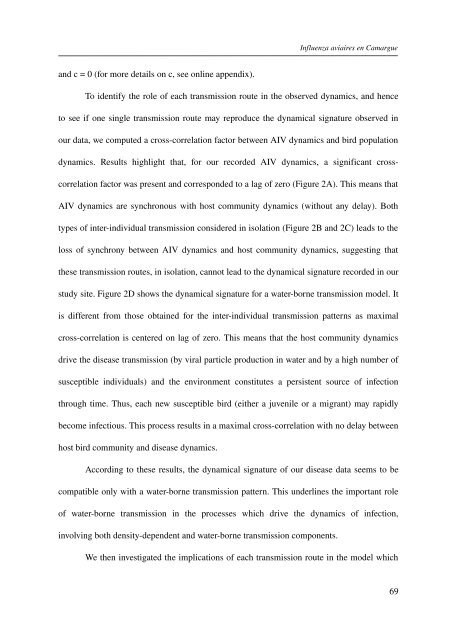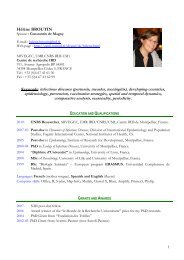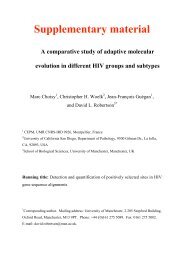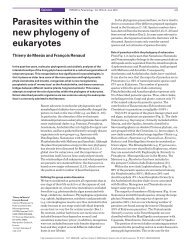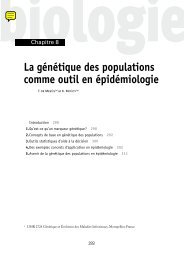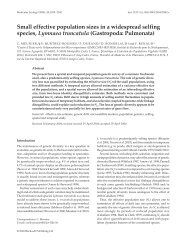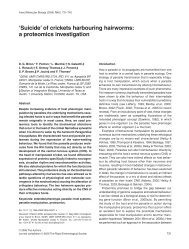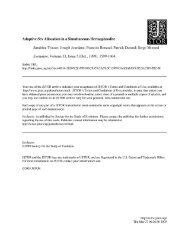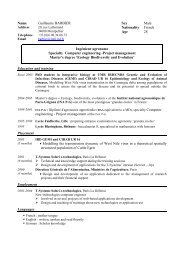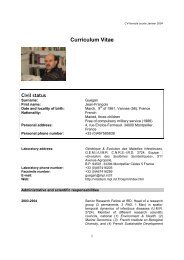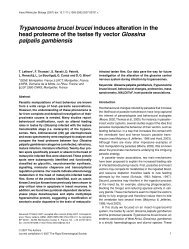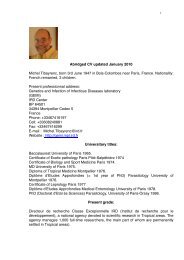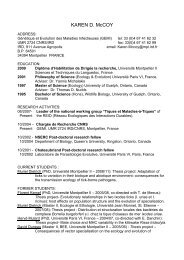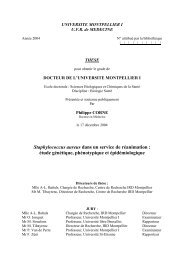écologie des virus influenza aviaires en Camargue - IRD
écologie des virus influenza aviaires en Camargue - IRD
écologie des virus influenza aviaires en Camargue - IRD
You also want an ePaper? Increase the reach of your titles
YUMPU automatically turns print PDFs into web optimized ePapers that Google loves.
Influ<strong>en</strong>za <strong>aviaires</strong> <strong>en</strong> <strong>Camargue</strong>and c = 0 (for more details on c, see online app<strong>en</strong>dix).To id<strong>en</strong>tify the role of each transmission route in the observed dynamics, and h<strong>en</strong>ceto see if one single transmission route may reproduce the dynamical signature observed inour data, we computed a crosscorrelation factor betwe<strong>en</strong> AIV dynamics and bird populationdynamics. Results highlight that, for our recorded AIV dynamics, a significant crosscorrelationfactor was pres<strong>en</strong>t and corresponded to a lag of zero (Figure 2A). This means thatAIV dynamics are synchronous with host community dynamics (without any delay). Bothtypes of interindividual transmission considered in isolation (Figure 2B and 2C) leads to theloss of synchrony betwe<strong>en</strong> AIV dynamics and host community dynamics, suggesting thatthese transmission routes, in isolation, cannot lead to the dynamical signature recorded in ourstudy site. Figure 2D shows the dynamical signature for a waterborne transmission model. Itis differ<strong>en</strong>t from those obtained for the interindividual transmission patterns as maximalcrosscorrelation is c<strong>en</strong>tered on lag of zero. This means that the host community dynamicsdrive the disease transmission (by viral particle production in water and by a high number ofsusceptible individuals) and the <strong>en</strong>vironm<strong>en</strong>t constitutes a persist<strong>en</strong>t source of infectionthrough time. Thus, each new susceptible bird (either a juv<strong>en</strong>ile or a migrant) may rapidlybecome infectious. This process results in a maximal crosscorrelation with no delay betwe<strong>en</strong>host bird community and disease dynamics.According to these results, the dynamical signature of our disease data seems to becompatible only with a waterborne transmission pattern. This underlines the important roleof waterborne transmission in the processes which drive the dynamics of infection,involving both d<strong>en</strong>sitydep<strong>en</strong>d<strong>en</strong>t and waterborne transmission compon<strong>en</strong>ts.We th<strong>en</strong> investigated the implications of each transmission route in the model which69


